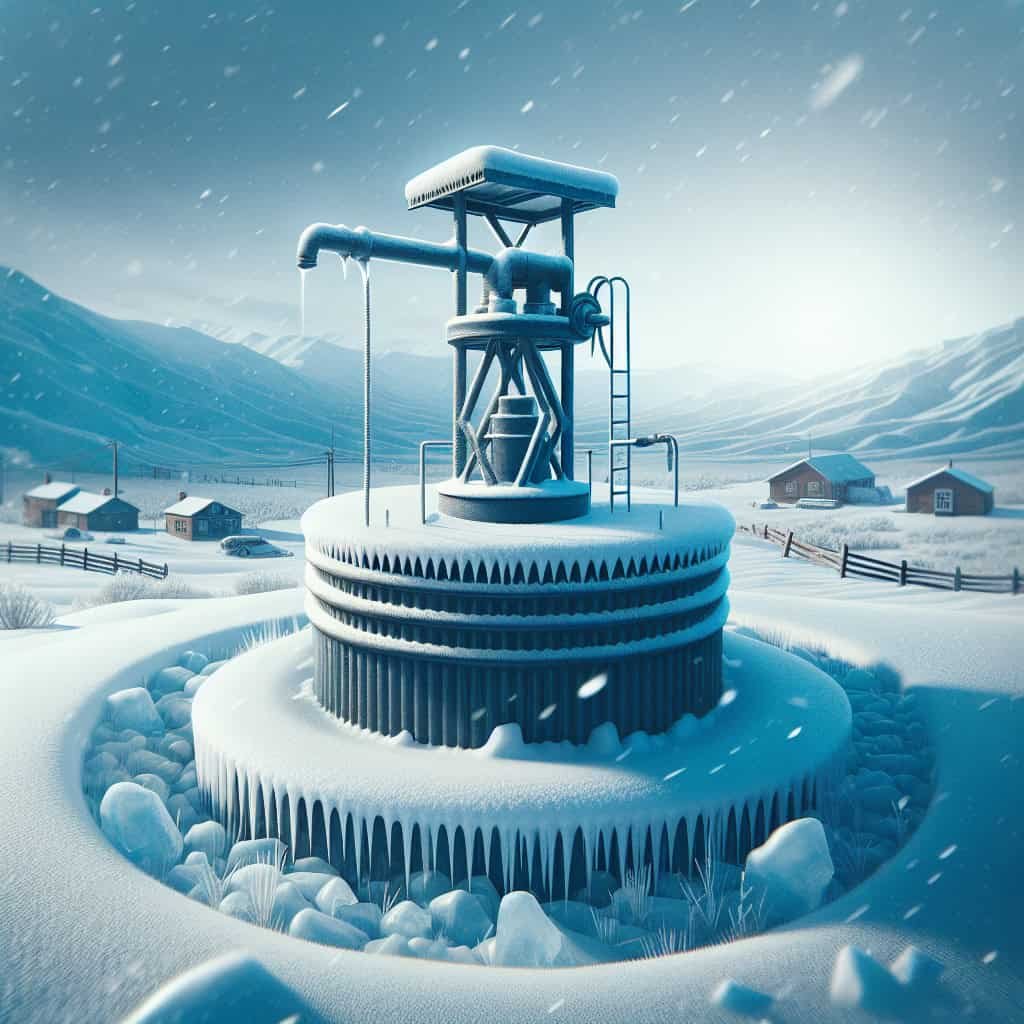Living in regions with extreme temperatures can present unique challenges when it comes to ensuring the safety of your well water. It’s important to take proactive steps to protect both the quality and the availability of this vital resource. From monitoring the water source to implementing proper insulation, there are several precautionary measures you can employ to safeguard your well water. In this article, we will explore some practical steps that you can take in order to maintain the safety of your well water in regions with extreme temperatures.

Testing Well Water Regularly
Testing well water regularly is essential to ensure the safety and quality of the water you are consuming. By conducting regular tests, you can identify any potential contaminants or issues with the well water early on and take the necessary actions to address them. It is recommended to test your well water at least once a year, or more frequently if you notice any changes in taste, odor, or color.
Maintaining Well Integrity
To ensure the integrity of your well and prevent any potential problems, there are several maintenance steps you should follow.
Insulating Well Casing
Insulating the well casing is crucial, especially in regions with extreme temperatures. The insulation helps to protect the well from freezing during the winter months and keeps the water at a more stable temperature. This can prevent any damage to the well and ensure that the water remains safe for consumption.
Checking for Cracks or Leaks
Regularly inspecting the well casing for cracks or leaks is essential. Any damage to the casing can allow contaminants to enter the well, compromising the safety of the water. If you notice any cracks or leaks, it is important to have them repaired promptly by a professional.
Protecting the Well from Freezing
In regions with extreme temperatures, freezing can be a significant concern for well owners. It is crucial to take preventative measures to protect the well from freezing. This can include insulating the wellhead, burying the water lines below the frost line, and using heat tracing to maintain a steady temperature in the well.
Proper Sealing and Venting
Properly sealing and venting the well is essential for maintaining its integrity. The seal prevents any contaminants from entering the well, while the vent allows for the release of any built-up gases. It is important to regularly check the seal and vent to ensure they are in good condition and functioning properly.
Monitoring Water Levels
Monitoring the water levels in your well is crucial to ensure a consistent and reliable water supply.
Understanding Seasonal Changes
Water levels can vary throughout the year, especially in regions with extreme temperatures. Understanding the seasonal changes in your area will help you anticipate any potential water shortages or issues. By monitoring these changes, you can take proactive measures to ensure an adequate water supply.
Monitoring Water Table
Keeping an eye on the water table is crucial for maintaining the well’s water levels. The water table represents the depth at which groundwater can be found. By monitoring the water table, you can determine if the well’s water level is being affected and take appropriate action if needed.
Installing Water Level Alarms
Installing water level alarms is an effective way to monitor the water levels in your well. These alarms can alert you when the water levels are getting too low or too high, allowing you to take action accordingly. Water level alarms can help prevent water shortages, pump failures, and other related issues.
Protecting Water Sources
Protecting your well and water sources from contamination is essential to ensure the safety and quality of your water supply.
Securing Wellhead
Securing the wellhead is crucial to prevent any potential contamination from entering the well. You should ensure that the wellhead is properly sealed and protected from any surface runoff, debris, or animals that could introduce contaminants. Regular inspections and maintenance of the wellhead are necessary to keep it secure.
Preventing Contamination
Taking preventive measures to avoid contamination is vital. It is important to ensure that there are no potential sources of contamination near the well, such as septic systems, livestock areas, or chemical storage facilities. Regular inspections and maintenance of the surrounding area can help identify any potential risks and take appropriate actions to prevent contamination.
Removing Potential Hazards
Identifying and removing any potential hazards near the well is essential for water safety. This can include removing or securing any chemicals, pesticides, or other hazardous materials that could potentially contaminate the water. Regular inspections and proper storage of these materials are necessary to prevent any accidents or contamination.

Proper Well Drilling and Construction
Proper well drilling and construction are crucial for ensuring the longevity and safety of your well.
Consulting with Experts
Before drilling a well, it is essential to consult with experts who have the knowledge and experience in the field. They can help determine the best location for the well, the appropriate drilling methods, and the necessary permits and regulations.
Choosing the Right Location
Selecting the right location for your well is essential. Factors to consider include the geology of the area, the proximity to potential sources of contamination, and the accessibility for maintenance and repairs. Choosing a suitable location will help prevent any future issues and ensure the safety of your water supply.
Using Appropriate Materials
Using high-quality materials during well construction is crucial. This includes using durable casings, screens, and seals that are resistant to corrosion and contamination. Investing in quality materials will ensure the longevity and safety of your well.
Installing Adequate Well Depth
Determining the appropriate well depth is crucial to ensure a reliable water supply. Factors such as the water table depth, the local geology, and the estimated water demand should be considered when determining the depth of the well. Adequate well depth will help prevent water shortages and ensure a consistent water supply.
Water Treatment and Filtration
Water treatment and filtration are important steps in maintaining the safety and quality of your well water.
Removing Sediments and Debris
Installing sediment filters or screens can help remove any sediments or debris that may be present in the well water. Sediments can affect the water quality and, if not removed, can potentially clog the water system. Regular maintenance and cleaning of the filters are necessary to ensure their effectiveness.
Disinfecting the Water
Disinfecting the well water is essential to eliminate any potentially harmful bacteria, viruses, or other microorganisms. Chlorination or other disinfection methods approved by experts can be used to ensure the safety of the water. Regular testing should be conducted to monitor the effectiveness of the disinfection process.
Filtering for Microorganisms and Chemicals
Installing appropriate filters that target specific microorganisms and chemicals can further enhance the quality of the well water. This can include filters for removing bacteria, viruses, heavy metals, or other contaminants. Regular maintenance and replacement of these filters are necessary to ensure their effectiveness.

Maintaining Heat Sources
Properly maintaining the heat sources in your well system is important, especially in regions with extreme temperatures.
Protecting Well Pump and Equipment
Protecting the well pump and other equipment from freezing or extreme temperatures is crucial to ensure their proper functioning. This can be achieved by insulating the pump and equipment, installing heat tracing or heat cables, and regularly checking for any signs of damage or malfunction.
Insulating Water Pipes
Insulating the water pipes connected to the well is essential to prevent freezing or temperature fluctuations. Insulation can help maintain a consistent temperature and prevent any damage to the pipes. Regular inspections and maintenance of the insulation are necessary to ensure its effectiveness.
Using Heat Tracing
Heat tracing is a method of applying heat to the well system to prevent freezing. This can involve the use of electric heating cables or tapes that are wrapped around the pipes or other vulnerable areas. Heat tracing should be installed by professionals and regularly inspected to ensure its proper functioning.
Emergency Preparation
Being prepared for emergencies is crucial for ensuring the safety and availability of your well water.
Having Backup Power Source
Having a backup power source, such as a generator, is vital during power outages. Power outages can disrupt the functioning of the well pump and other equipment, leading to a potential water shortage. Having a backup power source will ensure that you have access to water even during emergencies.
Preparing for Freeze and Thaw Cycles
In regions with extreme temperatures, freeze and thaw cycles can be common. It is essential to be prepared for these cycles by following the previously mentioned steps, such as insulating the well, protecting the pipes, and implementing heat tracing. Being proactive and prepared for these cycles will help prevent any potential damage to the well system.
Educating and Informing Residents
Educating and informing residents about well water safety and conservation practices is important for the overall well-being of the community.
Providing Water Usage Guidelines
Providing guidelines on responsible water usage can help educate residents about the importance of conservation. This can include tips on reducing water waste, avoiding excessive water use, and implementing efficient water fixtures and appliances. By promoting responsible water usage, you can contribute to the sustainability of the groundwater resources in your area.
Raising Awareness about Water Conservation
Raising awareness about water conservation is crucial for the long-term sustainability of well water resources. This can be done through community programs, educational materials, or public awareness campaigns. By informing residents about the importance of water conservation, you can help ensure the availability of water for future generations.
Regular Inspections and Maintenance
To ensure the continued safety and functionality of your well system, regular inspections and maintenance are necessary.
Hiring Professionals for Annual Check-ups
Hiring professionals for annual check-ups is recommended to ensure that your well system is in optimal condition. These professionals can conduct thorough inspections, test the water quality, and identify any potential issues that may require attention. Regular check-ups will help identify and address problems early on, preventing any further damage or water contamination.
Cleaning and Flushing the System
Regular cleaning and flushing of the well system are necessary to remove any accumulated sediments, debris, or bacteria. This can help maintain the water quality and prevent any clogging or damage to the system. It is important to follow the recommended guidelines and consult with professionals for proper cleaning and flushing methods.
By following these comprehensive steps, you can ensure the safety, quality, and reliability of your well water supply, even in regions with extreme temperatures. Regular testing, maintenance, and education will help protect your well and promote the conservation of water resources for the benefit of your community and the environment.

